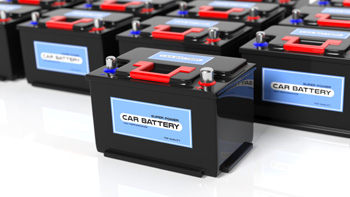 In today’s technology-driven world, our vehicles are more reliant on electrical systems than ever before. From ignition and lighting to navigation and entertainment, modern cars are packed with intricate electrical components that make our daily commute comfortable and safe. However, with this increased reliance on electronics comes a higher probability of encountering electrical issues. Understanding these problems and knowing how to address them is crucial for every vehicle owner. In this blog, we’ll explore common electrical issues in vehicles and provide some tips on how to address them.
In today’s technology-driven world, our vehicles are more reliant on electrical systems than ever before. From ignition and lighting to navigation and entertainment, modern cars are packed with intricate electrical components that make our daily commute comfortable and safe. However, with this increased reliance on electronics comes a higher probability of encountering electrical issues. Understanding these problems and knowing how to address them is crucial for every vehicle owner. In this blog, we’ll explore common electrical issues in vehicles and provide some tips on how to address them.
Common Electrical Issues
- Dead Battery: Perhaps the most common electrical problem vehicle owners face is a dead battery. A battery can die for various reasons, such as leaving lights on or a faulty charging system. Symptoms include dimming lights and a sluggish engine start. To address this, jump-starting your vehicle may help temporarily, but you should have your battery and charging system checked by a professional to prevent future issues.
- Faulty Alternator: The alternator plays a vital role in keeping the battery charged and electrical systems running. Signs of a faulty alternator include warning lights on the dashboard, dimming headlights, and a dying battery. If you suspect your alternator is failing, it’s essential to get it replaced promptly to avoid a breakdown.
- Starter Motor Problems: A malfunctioning starter motor can prevent your engine from cranking or starting altogether. A clicking sound when you turn the key is a common indicator. Addressing starter motor issues usually requires replacement by a mechanic.
- Blown Fuses: Fuses protect your vehicle’s electrical circuits from damage due to overloading or short circuits. If a specific electrical component stops working, check the corresponding fuse. If it’s blown, replace it with one of the same rating. Frequent blown fuses may indicate an underlying issue that needs professional attention.
- Faulty Wiring: Damaged or frayed wiring can lead to various electrical problems, including intermittent power loss, flickering lights, or malfunctioning accessories. Identifying and repairing damaged wiring can be challenging and is best left to skilled technicians.
- Malfunctioning Sensors: Modern vehicles are equipped with numerous sensors that monitor various systems. When sensors fail, it can lead to poor performance, reduced fuel efficiency, and warning lights on the dashboard. Diagnosing and replacing faulty sensors typically requires specialized equipment.
Addressing Electrical Issues
- Regular Maintenance: Prevention is key. Regularly scheduled maintenance, including battery checks, alternator inspections, and wiring evaluations, can catch potential issues before they become major problems.
- DIY Troubleshooting: For minor issues like blown fuses or loose connections, you can attempt DIY troubleshooting. Consult your vehicle’s manual and use a multimeter to test electrical components. However, always exercise caution, and if you’re unsure, seek professional assistance.
- Professional Help: When in doubt or faced with complex electrical problems, it’s best to consult a certified mechanic or auto electrician. They have the expertise, diagnostic tools, and experience to identify and fix issues accurately.
- Invest in Quality Parts: If you need to replace electrical components, choose high-quality, OEM (original equipment manufacturer) parts. These parts are designed to work seamlessly with your vehicle and are less likely to cause additional problems.
- Preventative Measures: Protect your vehicle’s electrical system by avoiding overloading power outlets, turning off accessories when not in use, and keeping your battery terminals clean and corrosion-free.
Conclusion
Understanding and addressing electrical issues in your vehicle is essential for ensuring a safe and smooth driving experience. From dead batteries to malfunctioning sensors, electrical problems can vary in complexity. While some issues can be resolved with basic troubleshooting, others require the expertise of a professional mechanic or auto electrician. Regular maintenance, preventative measures, and the use of quality parts can go a long way in preventing electrical problems. By staying vigilant and proactive, you can keep your vehicle’s electrical systems in top shape and enjoy trouble-free driving for years to come.
Lim’s Auto Body is a full service auto body and mechanical repair shop locally owned and operated in Largo, Florida. For more information, go to our web site www.limsautobody.com or call (727) 422-3232.

 Road trips are a fantastic way to explore new places, create lasting memories, and break away from the daily grind. Whether you’re planning a cross-country adventure or a weekend getaway, ensuring your vehicle is in tip-top shape is essential for a smooth and safe journey. In this guide, we’ll walk you through the key maintenance and safety tips to prepare your vehicle for a road trip.
Road trips are a fantastic way to explore new places, create lasting memories, and break away from the daily grind. Whether you’re planning a cross-country adventure or a weekend getaway, ensuring your vehicle is in tip-top shape is essential for a smooth and safe journey. In this guide, we’ll walk you through the key maintenance and safety tips to prepare your vehicle for a road trip.